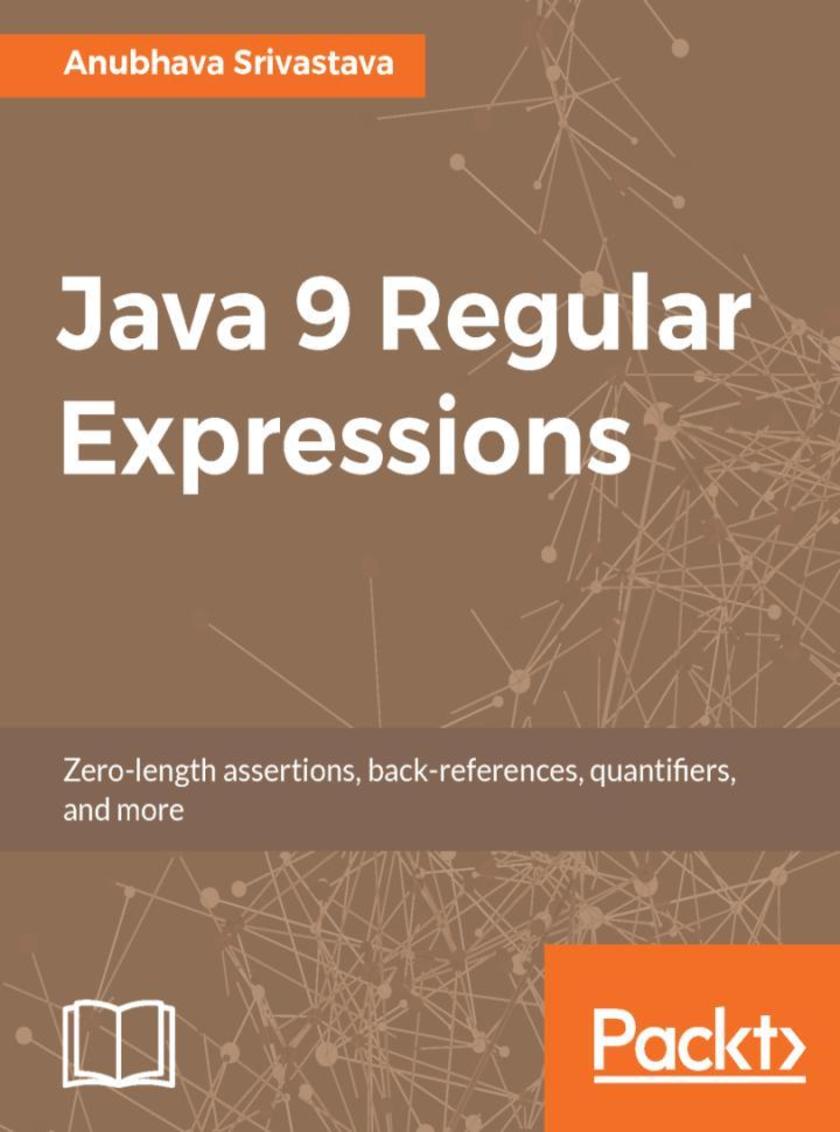
Java 9 Regular Expressions
¥63.21
Solve real world problems using Regex in Java. About This Book ? Discover regular expressions and how they work ? Implement regular expressions with Java to your code base ? Learn to use regular expressions in emails, URLs, paths, and IP addresses Who This Book Is For This book is for Java developers who would like to understand and use regular expressions. A basic knowledge of Java is assumed. What You Will Learn ? Understand the semantics, rules, and core concepts of writing Java code involving regular expressions ? Learn about the java.util.Regex package using the Pattern class, Matcher class, code snippets, and more ? Match and capture text in regex and use back-references to the captured groups ? Explore Regex using Java String methods and regex capabilities in the Java Scanner API ? Use zero-width assertions and lookarounds in regex ? Test and optimize a poorly performing regex and various other performance tips In Detail Regular expressions are a powerful tool in the programmer's toolbox and allow pattern matching. They are also used for manipulating text and data. This book will provide you with the know-how (and practical examples) to solve real-world problems using regex in Java. You will begin by discovering what regular expressions are and how they work with Java. This easy-to-follow guide is a great place from which to familiarize yourself with the core concepts of regular expressions and to master its implementation with the features of Java 9. You will learn how to match, extract, and transform text by matching specific words, characters, and patterns. You will learn when and where to apply the methods for finding patterns in digits, letters, Unicode characters, and string literals. Going forward, you will learn to use zero-length assertions and lookarounds, parsing the source code, and processing the log files. Finally, you will master tips, tricks, and best practices in regex with Java. Style and approach This book will take readers through this learning journey using simple, easy-to-understand, step-by-step instructions and hands-on examples at every stage.
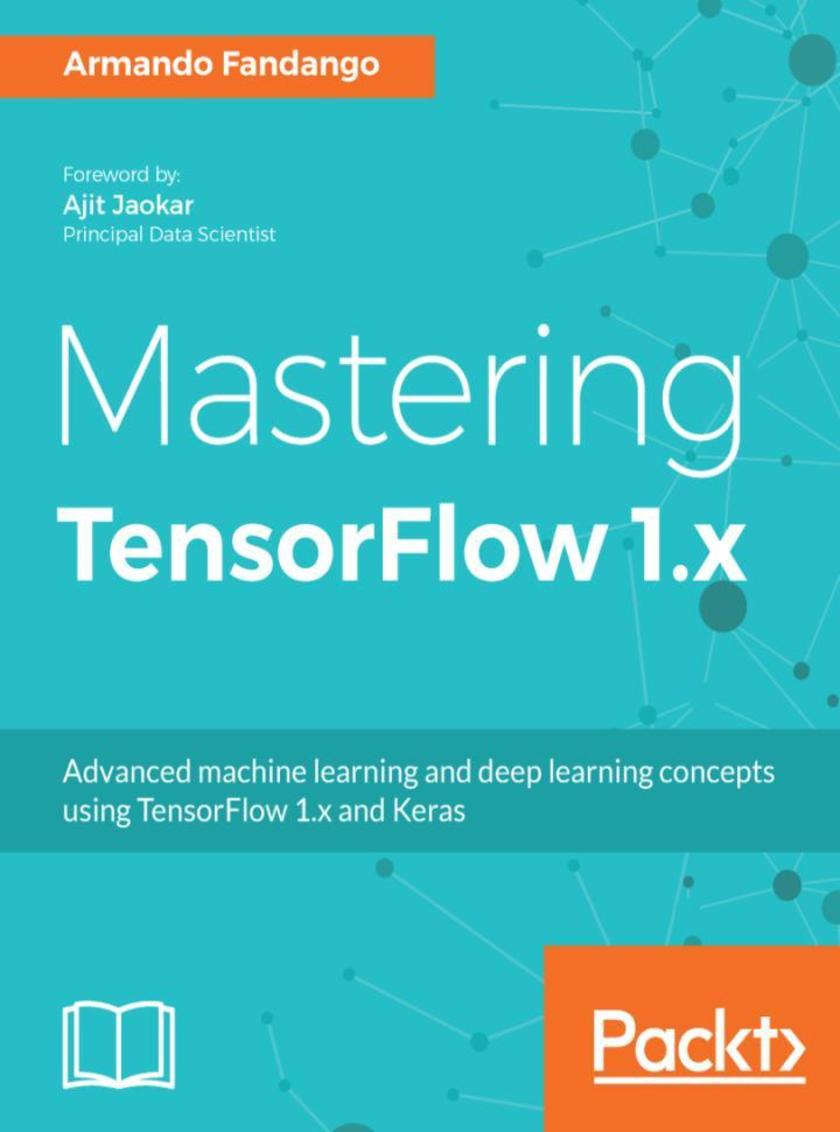
Mastering TensorFlow 1.x
¥63.21
Build, scale, and deploy deep neural network models using the star libraries in Python About This Book ? Delve into advanced machine learning and deep learning use cases using Tensorflow and Keras ? Build, deploy, and scale end-to-end deep neural network models in a production environment ? Learn to deploy TensorFlow on mobile, and distributed TensorFlow on GPU, Clusters, and Kubernetes Who This Book Is For This book is for data scientists, machine learning engineers, artificial intelligence engineers, and for all TensorFlow users who wish to upgrade their TensorFlow knowledge and work on various machine learning and deep learning problems. If you are looking for an easy-to-follow guide that underlines the intricacies and complex use cases of machine learning, you will find this book extremely useful. Some basic understanding of TensorFlow is required to get the most out of the book. What You Will Learn ? Master advanced concepts of deep learning such as transfer learning, reinforcement learning, generative models and more, using TensorFlow and Keras ? Perform supervised (classification and regression) and unsupervised (clustering) learning to solve machine learning tasks ? Build end-to-end deep learning (CNN, RNN, and Autoencoders) models with TensorFlow ? Scale and deploy production models with distributed and high-performance computing on GPU and clusters ? Build TensorFlow models to work with multilayer perceptrons using Keras, TFLearn, and R ? Learn the functionalities of smart apps by building and deploying TensorFlow models on iOS and Android devices ? Supercharge TensorFlow with distributed training and deployment on Kubernetes and TensorFlow Clusters In Detail TensorFlow is the most popular numerical computation library built from the ground up for distributed, cloud, and mobile environments. TensorFlow represents the data as tensors and the computation as graphs. This book is a comprehensive guide that lets you explore the advanced features of TensorFlow 1.x. Gain insight into TensorFlow Core, Keras, TF Estimators, TFLearn, TF Slim, Pretty Tensor, and Sonnet. Leverage the power of TensorFlow and Keras to build deep learning models, using concepts such as transfer learning, generative adversarial networks, and deep reinforcement learning. Throughout the book, you will obtain hands-on experience with varied datasets, such as MNIST, CIFAR-10, PTB, text8, and COCO-Images. You will learn the advanced features of TensorFlow1.x, such as distributed TensorFlow with TF Clusters, deploy production models with TensorFlow Serving, and build and deploy TensorFlow models for mobile and embedded devices on Android and iOS platforms. You will see how to call TensorFlow and Keras API within the R statistical software, and learn the required techniques for debugging when the TensorFlow API-based code does not work as expected. The book helps you obtain in-depth knowledge of TensorFlow, making you the go-to person for solving artificial intelligence problems. By the end of this guide, you will have mastered the offerings of TensorFlow and Keras, and gained the skills you need to build smarter, faster, and efficient machine learning and deep learning systems. Style and approach Step-by-step comprehensive guide filled with advanced, real-world examples to help you master Tensorflow 1.x
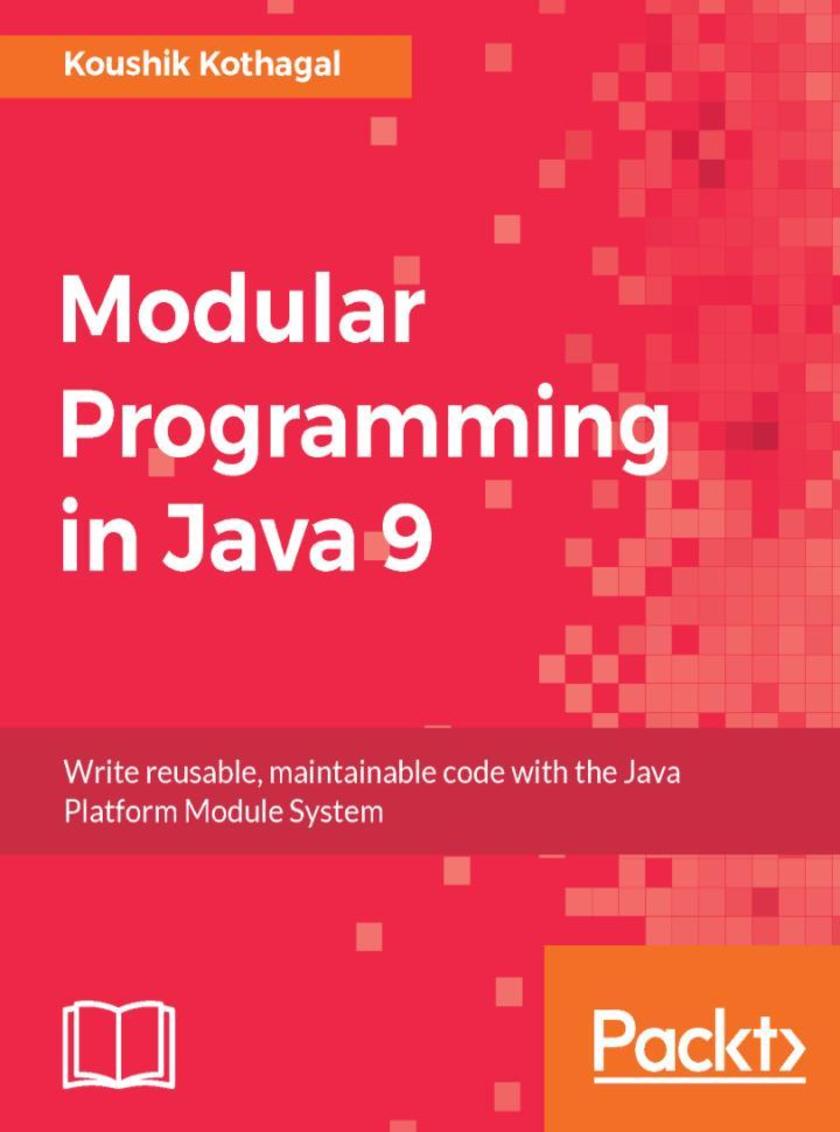
Modular Programming in Java 9
¥63.21
Kick-start your modular programming journey and gear up for the future of Java development About This Book ? Master design patterns and best practices to build truly modular applications in Java 9 ? Upgrade your old Java code to Java 9 with ease ? Build and run a smooth functioning multi-module application. Who This Book Is For This book is written for Java developers who are interested in learning and understanding the techniques and best practices to build modular applications in Java. The book assumes some previous programming experience in Java 8 or earlier, familiarity with the basic Java types such as classes and interfaces, as well as experience in compiling and executing Java programs. What You Will Learn ? Get introduced to the concept of modules and modular programming by working on a fully modular Java application ? Build and configure your own Java 9 modules ? Work with multiple modules and establish inter-module dependencies ? Understand and use the principles of encapsulation, readability, and accessibility ? Use jlink to generate fully loaded custom runtime images like a pro ? Discover the best practices to help you write awesome modules that are a joy to use and maintain ? Upgrade your old Java code to use the new Java 9 module system In Detail The Java 9 module system is an important addition to the language that affects the way we design, write, and organize code and libraries in Java. It provides a new way to achieve maintainable code by the encapsulation of Java types, as well as a way to write better libraries that have clear interfaces. Effectively using the module system requires an understanding of how modules work and what the best practices of creating modules are. This book will give you step-by-step instructions to create new modules as well as migrate code from earlier versions of Java to the Java 9 module system. You'll be working on a fully modular sample application and add features to it as you learn about Java modules. You'll learn how to create module definitions, setup inter-module dependencies, and use the built-in modules from the modular JDK. You will also learn about module resolution and how to use jlink to generate custom runtime images. We will end our journey by taking a look at the road ahead. You will learn some powerful best practices that will help you as you start building modular applications. You will also learn how to upgrade an existing Java 8 codebase to Java 9, handle issues with libraries, and how to test Java 9 applications. Style and Approach The book is a step-by-step guide to understanding Modularity and building a complete application using a modular design.
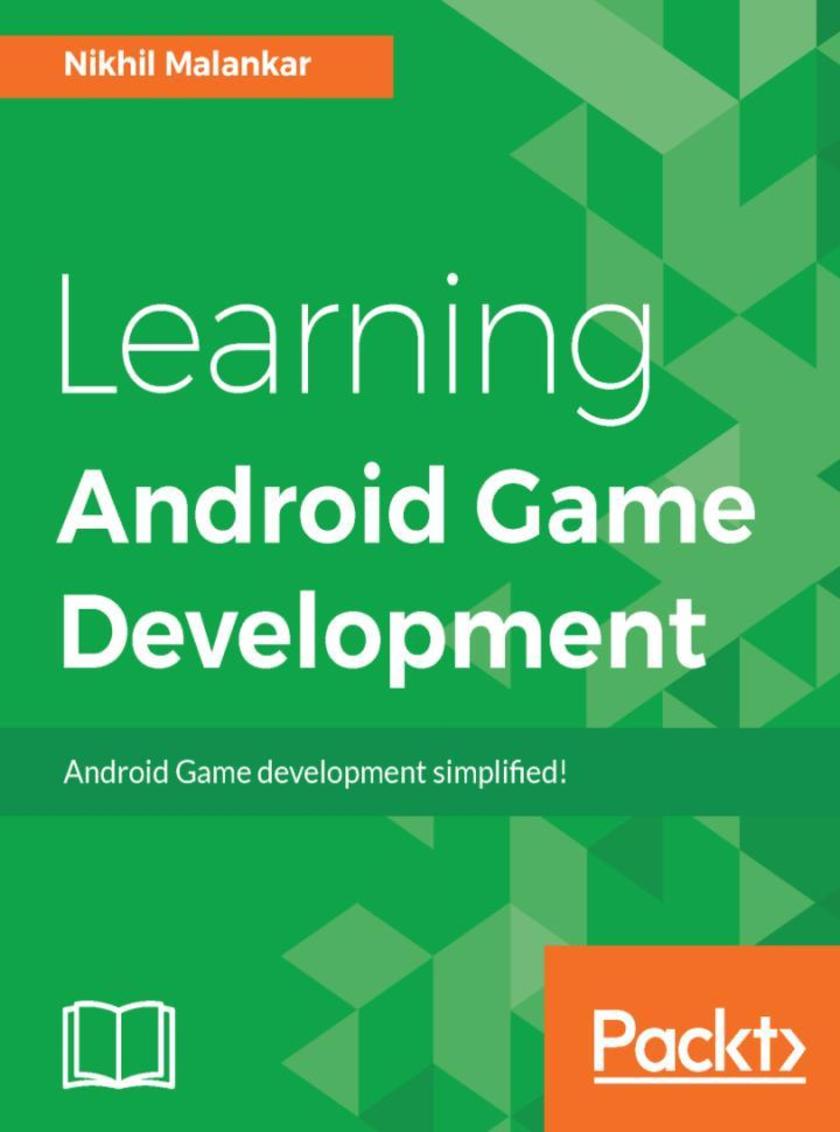
Learning Android Game Development
¥63.21
Learn the art of making Android games and turn your game development dreams into reality About This Book ? Leverage the latest features of Android N to create real-world 2D games ? Architect a 2D game from scratch and level up your Android game development skill ? Transition from developing simple 2D games to 3D games using basic Java code Who This Book Is For If you are a mobile developer who has basic Java programming knowledge, then this book is ideal for you. Previous Android development experience is not needed; however, basic mobile development knowledge is essential. What You Will Learn ? Understand the nuts and bolts of developing highly interactive and interesting games for Android N ? Link the interface to the code used in games through simple methods ? Interact with the images on the screen and also learn to animate them ? Set and save the game state and save high scores, hit points, and so on for your games ? Get a grasp of various collision techniques and implement the bounding box technique ? Convert your 2D games to 3D games using Android N ? Get an understanding of the process of UI creation using Android Studio In Detail In this book, we’ll start with installing Android studio and its components, and setting it up ready for Android N. We teach you how to take inputs from users, create images and interact with them, and work with sprites to create animations. You’ll then explore the various collision detection methods and use sprites to create an explosion. Moving on, you’ll go through the process of UI creation and see how to create buttons as well as display the score and other parameters on screen. By the end of the book, you will have a working example and an understanding of a 2D platform game like Super Mario and know how to convert your 2D games to 3D games. Style and approach This easy-to-understand guide follows a step-by-step approach to building games, and contains plenty of graphical examples for you to follow and grasp quickly, giving you the chance to implement the concepts practically.
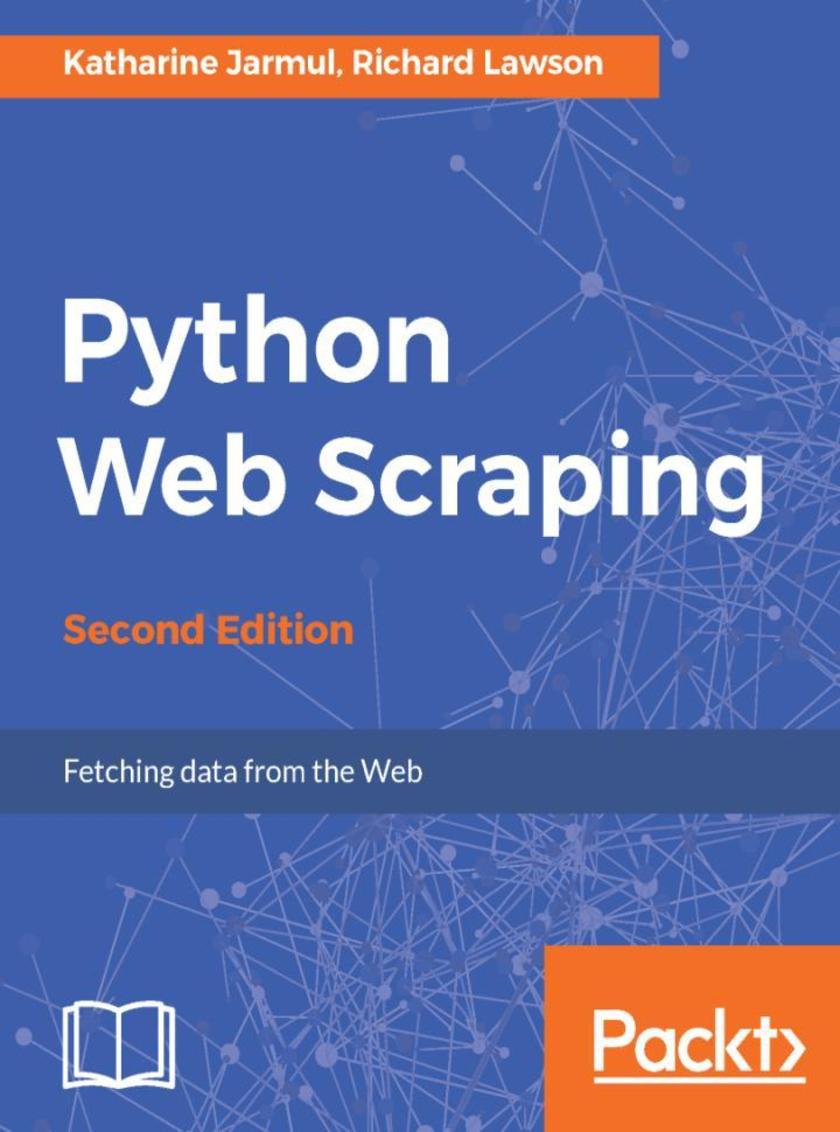
Python Web Scraping - Second Edition
¥63.21
Successfully scrape data from any website with the power of Python 3.x About This Book ? A hands-on guide to web scraping using Python with solutions to real-world problems ? Create a number of different web scrapers in Python to extract information ? This book includes practical examples on using the popular and well-maintained libraries in Python for your web scraping needs Who This Book Is For This book is aimed at developers who want to use web scraping for legitimate purposes. Prior programming experience with Python would be useful but not essential. Anyone with general knowledge of programming languages should be able to pick up the book and understand the principals involved. What You Will Learn ? Extract data from web pages with simple Python programming ? Build a concurrent crawler to process web pages in parallel ? Follow links to crawl a website ? Extract features from the HTML ? Cache downloaded HTML for reuse ? Compare concurrent models to determine the fastest crawler ? Find out how to parse JavaScript-dependent websites ? Interact with forms and sessions In Detail The Internet contains the most useful set of data ever assembled, most of which is publicly accessible for free. However, this data is not easily usable. It is embedded within the structure and style of websites and needs to be carefully extracted. Web scraping is becoming increasingly useful as a means to gather and make sense of the wealth of information available online. This book is the ultimate guide to using the latest features of Python 3.x to scrape data from websites. In the early chapters, you’ll see how to extract data from static web pages. You’ll learn to use caching with databases and files to save time and manage the load on servers. After covering the basics, you’ll get hands-on practice building a more sophisticated crawler using browsers, crawlers, and concurrent scrapers. You’ll determine when and how to scrape data from a JavaScript-dependent website using PyQt and Selenium. You’ll get a better understanding of how to submit forms on complex websites protected by CAPTCHA. You’ll find out how to automate these actions with Python packages such as mechanize. You’ll also learn how to create class-based scrapers with Scrapy libraries and implement your learning on real websites. By the end of the book, you will have explored testing websites with scrapers, remote scraping, best practices, working with images, and many other relevant topics. Style and approach This hands-on guide is full of real-life examples and solutions starting simple and then progressively becoming more complex. Each chapter in this book introduces a problem and then provides one or more possible solutions.
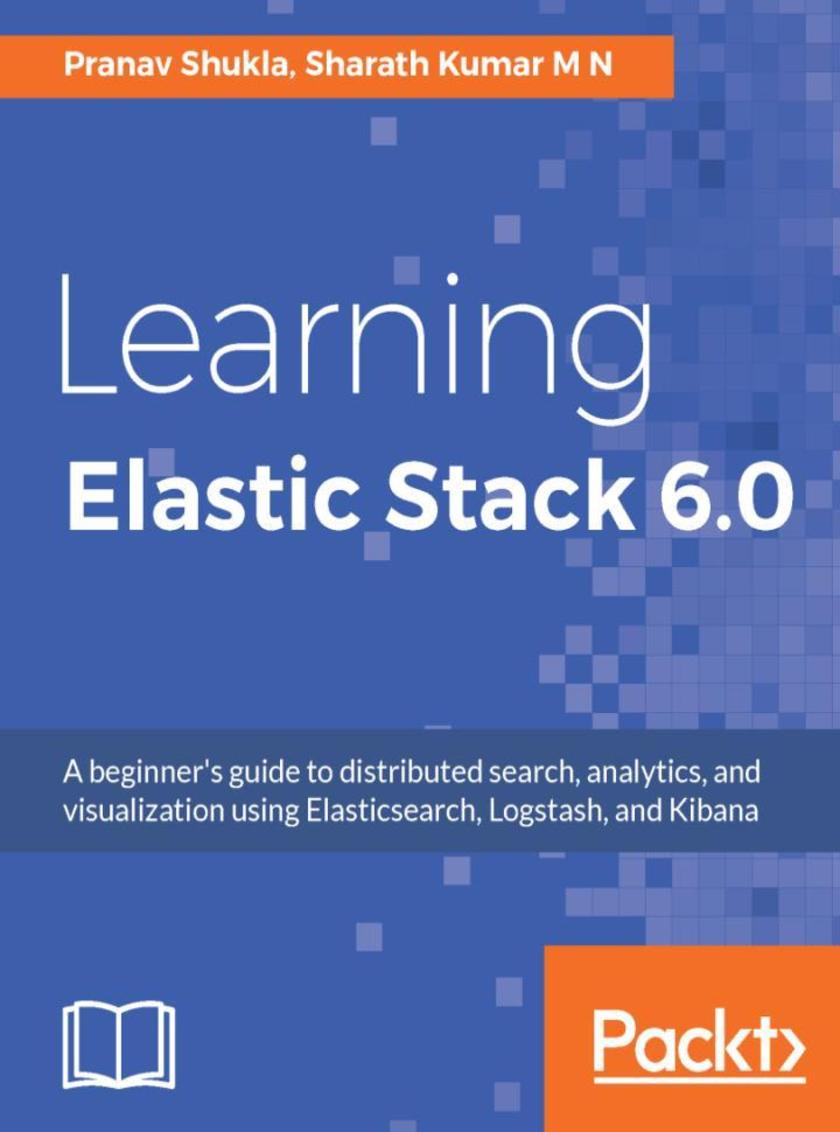
Learning Elastic Stack 6.0
¥63.21
Deliver end-to-end real-time distributed data processing solutions by leveraging the power of Elastic Stack 6.0 About This Book ? Get to grips with the new features introduced in Elastic Stack 6.0 ? Get valuable insights from your data by working with the different components of the Elastic stack such as Elasticsearch, Logstash, Kibana, X-Pack, and Beats ? Includes handy tips and techniques to build, deploy and manage your Elastic applications efficiently on-premise or on the cloud Who This Book Is For This book is for data professionals who want to get amazing insights and business metrics from their data sources. If you want to get a fundamental understanding of the Elastic Stack for distributed, real-time processing of data, this book will help you. A fundamental knowledge of JSON would be useful, but is not mandatory. No previous experience with the Elastic Stack is required. What You Will Learn ? Familiarize yourself with the different components of the Elastic Stack ? Get to know the new functionalities introduced in Elastic Stack 6.0 ? Effectively build your data pipeline to get data from terabytes or petabytes of data into Elasticsearch and Logstash for searching and logging ? Use Kibana to visualize data and tell data stories in real-time ? Secure, monitor, and use the alerting and reporting capabilities of Elastic Stack ? Take your Elastic application to an on-premise or cloud-based production environment In Detail The Elastic Stack is a powerful combination of tools for distributed search, analytics, logging, and visualization of data from medium to massive data sets. The newly released Elastic Stack 6.0 brings new features and capabilities that empower users to find unique, actionable insights through these techniques. This book will give you a fundamental understanding of what the stack is all about, and how to use it efficiently to build powerful real-time data processing applications. After a quick overview of the newly introduced features in Elastic Stack 6.0, you’ll learn how to set up the stack by installing the tools, and see their basic configurations. Then it shows you how to use Elasticsearch for distributed searching and analytics, along with Logstash for logging, and Kibana for data visualization. It also demonstrates the creation of custom plugins using Kibana and Beats. You’ll find out about Elastic X-Pack, a useful extension for effective security and monitoring. We also provide useful tips on how to use the Elastic Cloud and deploy the Elastic Stack in production environments. On completing this book, you’ll have a solid foundational knowledge of the basic Elastic Stack functionalities. You’ll also have a good understanding of the role of each component in the stack to solve different data processing problems. Style and approach This step-by-step guide will show you the Elastic Stack, covering all the components through interactive and easy-to-follow examples. It also includes handy tips.
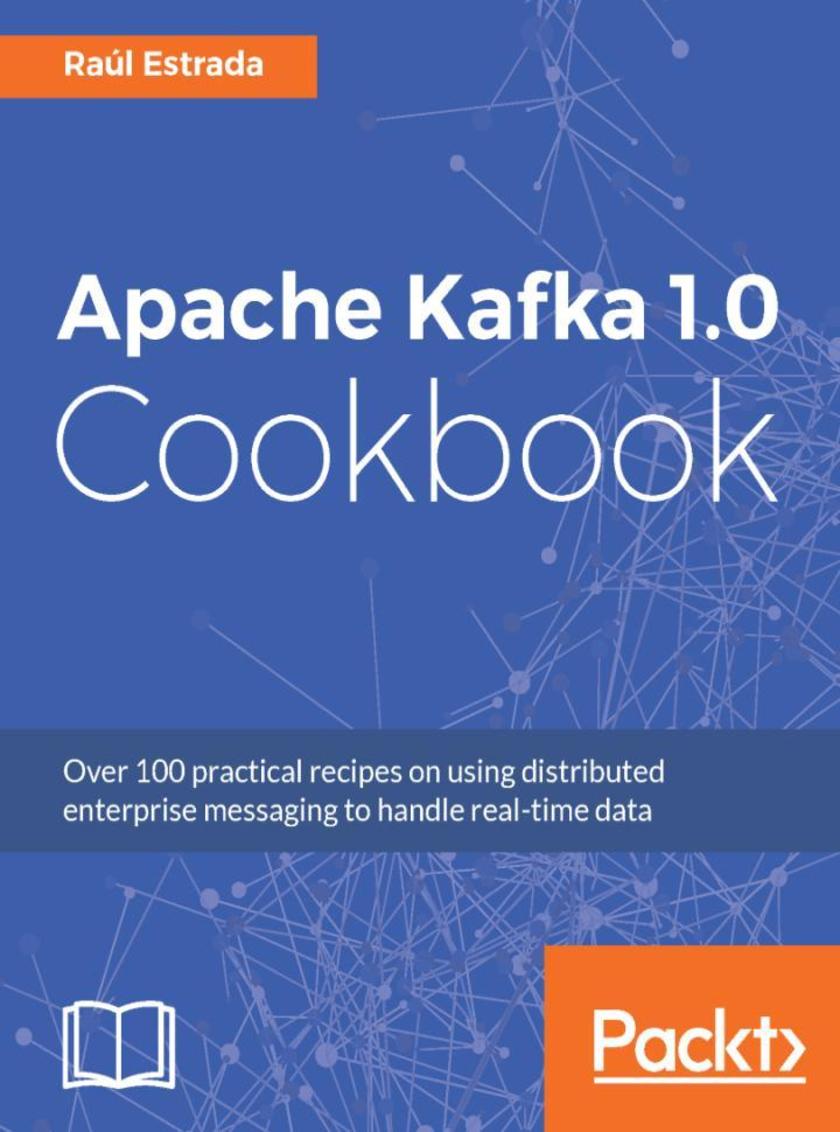
Apache Kafka 1.0 Cookbook
¥63.21
Simplify real-time data processing by leveraging the power of Apache Kafka 1.0 About This Book ? Use Kafka 1.0 features such as Confluent platforms and Kafka streams to build efficient streaming data applications to handle and process your data ? Integrate Kafka with other Big Data tools such as Apache Hadoop, Apache Spark, and more ? Hands-on recipes to help you design, operate, maintain, and secure your Apache Kafka cluster with ease Who This Book Is For This book is for developers and Kafka administrators who are looking for quick, practical solutions to problems encountered while operating, managing or monitoring Apache Kafka. If you are a developer, some knowledge of Scala or Java will help, while for administrators, some working knowledge of Kafka will be useful. What You Will Learn ? Install and configure Apache Kafka 1.0 to get optimal performance ? Create and configure Kafka Producers and Consumers ? Operate your Kafka clusters efficiently by implementing the mirroring technique ? Work with the new Confluent platform and Kafka streams, and achieve high availability with Kafka ? Monitor Kafka using tools such as Graphite and Ganglia ? Integrate Kafka with third-party tools such as Elasticsearch, Logstash, Apache Hadoop, Apache Spark, and more In Detail Apache Kafka provides a unified, high-throughput, low-latency platform to handle real-time data feeds. This book will show you how to use Kafka efficiently, and contains practical solutions to the common problems that developers and administrators usually face while working with it. This practical guide contains easy-to-follow recipes to help you set up, configure, and use Apache Kafka in the best possible manner. You will use Apache Kafka Consumers and Producers to build effective real-time streaming applications. The book covers the recently released Kafka version 1.0, the Confluent Platform and Kafka Streams. The programming aspect covered in the book will teach you how to perform important tasks such as message validation, enrichment and composition.Recipes focusing on optimizing the performance of your Kafka cluster, and integrate Kafka with a variety of third-party tools such as Apache Hadoop, Apache Spark, and Elasticsearch will help ease your day to day collaboration with Kafka greatly. Finally, we cover tasks related to monitoring and securing your Apache Kafka cluster using tools such as Ganglia and Graphite. If you're looking to become the go-to person in your organization when it comes to working with Apache Kafka, this book is the only resource you need to have. Style and approach Following a cookbook recipe-based approach, we’ll teach you how to solve everyday difficulties and struggles you encounter using Kafka through hands-on examples.
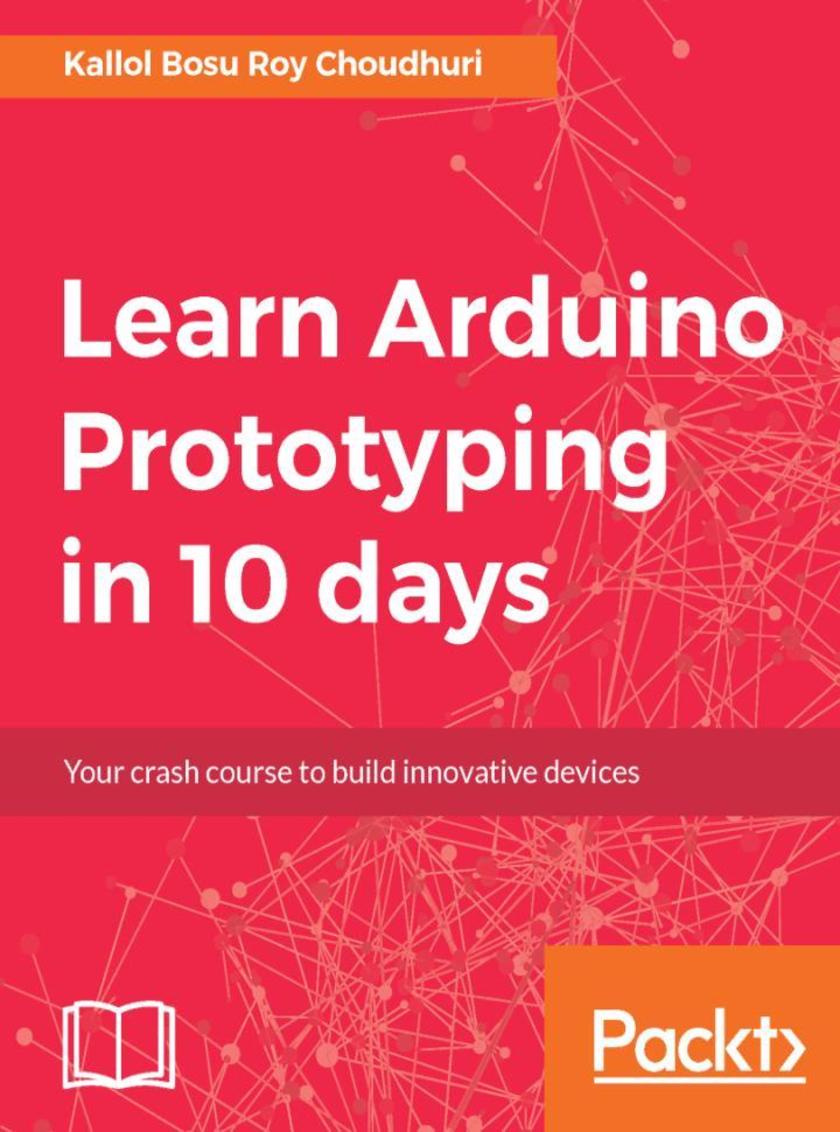
Learn Arduino Prototyping in 10 days
¥63.21
The ultimate power-packed crash course in building Arduino-based projects in just 10 days! About This Book ? A carefully designed 10-day crash course, covering major project/device types, with 20+ unique hands-on examples ? Get easy-to-understand explanations of basic electronics fundamentals and commonly used C sketch functions ? This step-by-step guide with 90+ diagrams and 50+ important tips will help you become completely self-reliant and confident Who This Book Is For This book is a beginner’s crash course for professionals, hobbyists, and students who are tech savvy, have a basic level of C programming knowledge, and basic familiarity with electronics, be it for embedded systems or the Internet of Things. What You Will Learn ? Write Arduino sketches and understand the fundamentals of building prototype circuits using basic electronic components, such as resistors, transistors, and diodes ? Build simple, compound, and standalone devices with auxiliary storage (SD card), a DC battery, and AC power supplies ? Deal with basic sensors and interface sensor modules by using sensor datasheets ? Discover the fundamental techniques of prototyping with actuators ? Build remote-controlled devices with infrared (IR), radio frequency (RF), and telephony with GSM ? Learn IoT edge device prototyping (using ESP8266) and IoT cloud configuration In Detail This book is a quick, 10-day crash course that will help you become well acquainted with the Arduino platform. The primary focus is to empower you to use the Arduino platform by applying basic fundamental principles. You will be able to apply these principles to build almost any type of physical device. The projects you will work through in this book are self-contained micro-controller projects, interfacing with single peripheral devices (such as sensors), building compound devices (multiple devices in a single setup), prototyping standalone devices (powered from independent power sources), working with actuators (such as DC motors), interfacing with an AC-powered device, wireless devices (with Infrared, Radio Frequency and GSM techniques), and finally implementing the Internet of Things (using the ESP8266 series Wi-Fi chip with an IoT cloud platform). The first half of the book focuses on fundamental techniques and building basic types of device, and the final few chapters will show you how to prototype wireless devices. By the end of this book, you will have become acquainted with the fundamental principles in a pragmatic and scientific manner. You will also be confident enough to take up new device prototyping challenges. Style and approach This step-by- step guide will serve as a quick, 10-day crash course to help you become well acquainted with the Arduino platform.
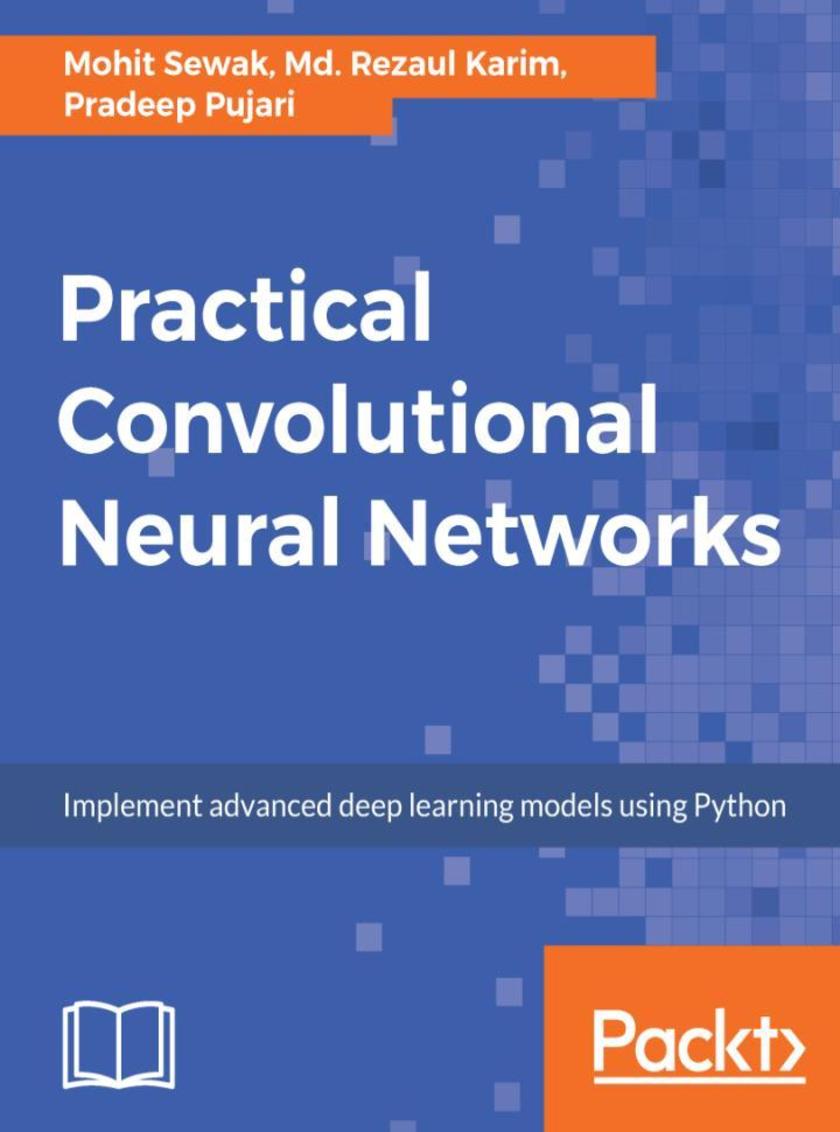
Practical Convolutional Neural Networks
¥63.21
One stop guide to implementing award-winning, and cutting-edge CNN architectures About This Book ? Fast-paced guide with use cases and real-world examples to get well versed with CNN techniques ? Implement CNN models on image classification, transfer learning, Object Detection, Instance Segmentation, GANs and more ? Implement powerful use-cases like image captioning, reinforcement learning for hard attention, and recurrent attention models Who This Book Is For This book is for data scientists, machine learning and deep learning practitioners, Cognitive and Artificial Intelligence enthusiasts who want to move one step further in building Convolutional Neural Networks. Get hands-on experience with extreme datasets and different CNN architectures to build efficient and smart ConvNet models. Basic knowledge of deep learning concepts and Python programming language is expected. What You Will Learn ? From CNN basic building blocks to advanced concepts understand practical areas they can be applied to ? Build an image classifier CNN model to understand how different components interact with each other, and then learn how to optimize it ? Learn different algorithms that can be applied to Object Detection, and Instance Segmentation ? Learn advanced concepts like attention mechanisms for CNN to improve prediction accuracy ? Understand transfer learning and implement award-winning CNN architectures like AlexNet, VGG, GoogLeNet, ResNet and more ? Understand the working of generative adversarial networks and how it can create new, unseen images In Detail Convolutional Neural Network (CNN) is revolutionizing several application domains such as visual recognition systems, self-driving cars, medical discoveries, innovative eCommerce and more.You will learn to create innovative solutions around image and video analytics to solve complex machine learning and computer vision related problems and implement real-life CNN models. This book starts with an overview of deep neural networkswith the example of image classification and walks you through building your first CNN for human face detector. We will learn to use concepts like transfer learning with CNN, and Auto-Encoders to build very powerful models, even when not much of supervised training data of labeled images is available. Later we build upon the learning achieved to build advanced vision related algorithms for object detection, instance segmentation, generative adversarial networks, image captioning, attention mechanisms for vision, and recurrent models for vision. By the end of this book, you should be ready to implement advanced, effective and efficient CNN models at your professional project or personal initiatives by working on complex image and video datasets. Style and approach An easy to follow concise and illustrative guide explaining the core concepts of ConvNets to help you understand, implement and deploy your CNN models quickly.
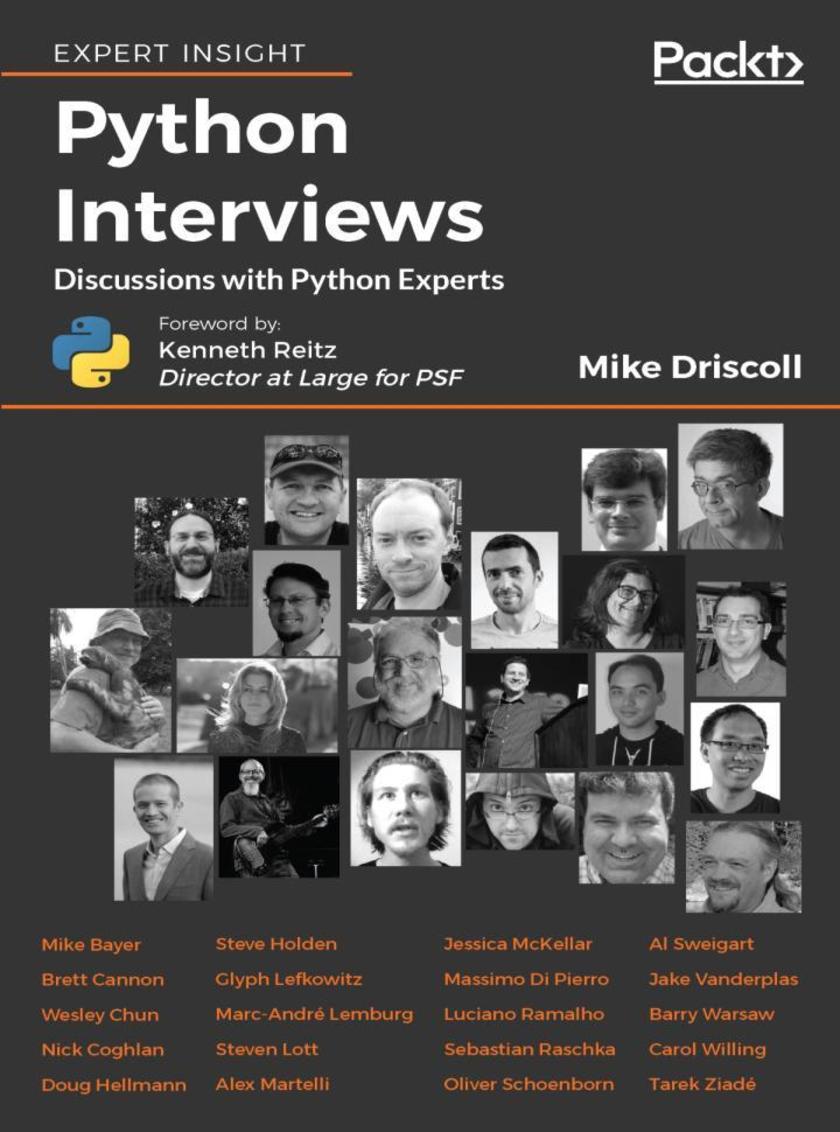
Python Interviews
¥63.21
Mike Driscoll takes you on a journey talking to a hall-of-fame list of truly remarkable Python experts. You’ll be inspired every time by their passion for the Python language, as they share with you their experiences, contributions, and careers in Python. About This Book ? Hear from these key Python thinkers about the current status of Python, and where it's heading in the future ? Listen to their close thoughts on significant Python topics, such as Python's role in scientific computing, and machine learning ? Understand the direction of Python, and what needs to change for Python 4 Who This Book Is For Python programmers and students interested in the way that Python is used – past and present – with useful anecdotes. It will also be of interest to those looking to gain insights from top programmers. What You Will Learn ? How successful programmers think ? The history of Python ? Insights into the minds of the Python core team ? Trends in Python programming In Detail Each of these twenty Python Interviews can inspire and refresh your relationship with Python and the people who make Python what it is today. Let these interviews spark your own creativity, and discover how you also have the ability to make your mark on a thriving tech community. This book invites you to immerse in the Python landscape, and let these remarkable programmers show you how you too can connect and share with Python programmers around the world. Learn from their opinions, enjoy their stories, and use their tech tips. ? Brett Cannon - former director of the PSF, Python core developer, led the migration to Python 3. ? Steve Holden - tireless Python promoter and former chairman and director of the PSF. ? Carol Willing - former director of the PSF and Python core developer, Project Jupyter Steering Council member. ? Nick Coghlan - founding member of the PSF and Python core developer. ? Jessica McKellar - former director of the PSF and Python activist. ? Marc-André Lemburg - Python core developer and founding member of the PSF. ? Glyph Lefkowitz - founder of Twisted and fellow of the PSF. ? Doug Hellmann - fellow of the PSF, creator of the Python Module of the Week blog, Python community member since 1998. ? Massimo Di Pierro - fellow of the PSF, data scientist and the inventor of web2py. ? Alex Martelli - fellow of the PSF and co-author of Python in a Nutshell. ? Barry Warsaw - fellow of the PSF, Python core developer since 1995, and original member of PythonLabs. ? Tarek Ziadé - founder of Afpy and author of Expert Python Programming. ? Sebastian Raschka - data scientist and author of Python Machine Learning. ? Wesley Chun - fellow of the PSF and author of the Core Python Programming books. ? Steven Lott - Python blogger and author of Python for Secret Agents. ? Oliver Schoenborn - author of Pypubsub and wxPython mailing list contributor. ? Al Sweigart - bestselling author and creator of the Python modules Pyperclip and PyAutoGUI. ? Luciano Ramalho - fellow of the PSF and the author of Fluent Python. ? Mike Bayer - fellow of the PSF, creator of open source libraries including SQLAlchemy. ? Jake Vanderplas - data scientist and author of Python Data Science Handbook. Style and approach This is a book of one-to-one interviews with leading Python programmers and luminaries in the field.
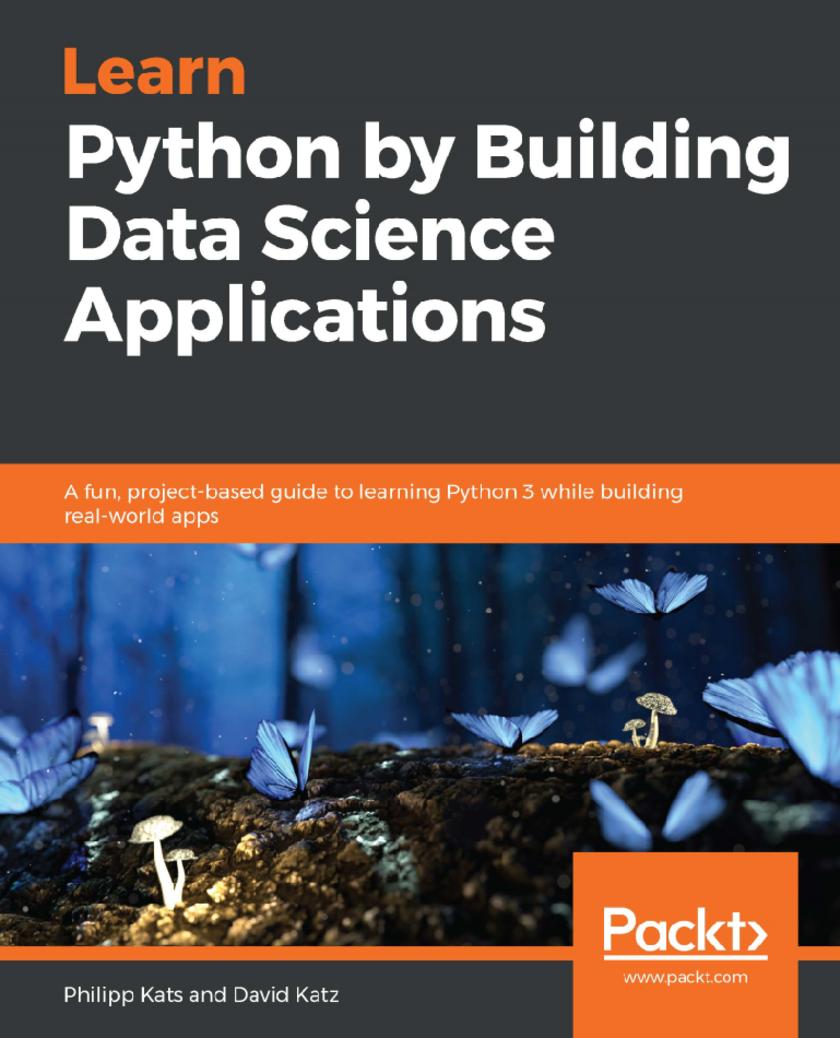
Learn Python by Building Data Science Applications
¥63.21
Understand the constructs of the Python programming language and use them to build data science projects Key Features * Learn the basics of developing applications with Python and deploy your first data application * Take your first steps in Python programming by understanding and using data structures, variables, and loops * Delve into Jupyter, NumPy, Pandas, SciPy, and sklearn to explore the data science ecosystem in Python Book Description Python is the most widely used programming language for building data science applications. Complete with step-by-step instructions, this book contains easy-to-follow tutorials to help you learn Python and develop real-world data science projects. The “secret sauce” of the book is its curated list of topics and solutions, put together using a range of real-world projects, covering initial data collection, data analysis, and production. This Python book starts by taking you through the basics of programming, right from variables and data types to classes and functions. You’ll learn how to write idiomatic code and test and debug it, and discover how you can create packages or use the range of built-in ones. You’ll also be introduced to the extensive ecosystem of Python data science packages, including NumPy, Pandas, scikit-learn, Altair, and Datashader. Furthermore, you’ll be able to perform data analysis, train models, and interpret and communicate the results. Finally, you’ll get to grips with structuring and scheduling scripts using Luigi and sharing your machine learning models with the world as a microservice. By the end of the book, you’ll have learned not only how to implement Python in data science projects, but also how to maintain and design them to meet high programming standards. What you will learn * Code in Python using Jupyter and VS Code * Explore the basics of coding – loops, variables, functions, and classes * Deploy continuous integration with Git, Bash, and DVC * Get to grips with Pandas, NumPy, and scikit-learn * Perform data visualization with Matplotlib, Altair, and Datashader * Create a package out of your code using poetry and test it with PyTest * Make your machine learning model accessible to anyone with the web API Who this book is for If you want to learn Python or data science in a fun and engaging way, this book is for you. You’ll also find this book useful if you’re a high school student, researcher, analyst, or anyone with little or no coding experience with an interest in the subject and courage to learn, fail, and learn from failing. A basic understanding of how computers work will be useful.

Learn Ethereum
¥63.21
Explore the blockchain-based decentralized platform and understand how Ethereum works with Dapps examples Key Features * Explore the Ethereum ecosystem and understand the latest research on the platform * Build decentralized apps (Dapps) using smart contracts and Ethereum with the help of practical examples * Learn to make your decentralized applications fast and highly secure Book Description Ethereum is a blockchain-based, decentralized computing platform that allows running smart contracts. This book provides a basic overview of how Ethereum works, its ecosystem, mining process, and the consensus mechanism. It also demonstrates a step-by-step approach for building decentralized applications. This book begins with the very basics of Blockchain technology. Then it dives deep into the Ethereum architecture, framework and tools in its ecosystem. It also provides you an overview of ongoing research on Ethereum, for example, Layer 1 and 2 scaling solution, Stablecoin, ICO/STO/IEO, etc. Next, it explains Solidity language in detail, and provides step-by-step instructions for designing, developing, testing, deploying, and monitoring decentralized applications. In addition, you’ll learn how to use Truffle, Remix, Infura, Metamask, and many other Ethereum technologies. It’ll also help you develop your own cryptocurrency by creating ERC20, and ERC721 smart contracts from scratch. Finally, we explain private blockchains, and you learn how to interact with smart contracts through wallets. What you will learn * Understand the concepts of blockchain and cryptocurrency * Master Ethereum development tools such as Truffle, Remix IDE and Infura * Delve into smart contract development * Develop DApps frontend using Node.js, React.js, and Web3js API * Learn Etherscan and other tools to secure and monitor smart contracts * Develop and debug smart contracts by working with Remix * Apply Truffle suite to compile, migrate, and unit test smart contracts * Explore smart contracts such as ERC20 token and decentralized digital market Who this book is for This book is for all developers and architects who want to explore Ethereum blockchain fundamentals and get started with building real-world decentralized applications. Knowledge of an object-oriented programming language such as JavaScript will be useful but not mandatory.
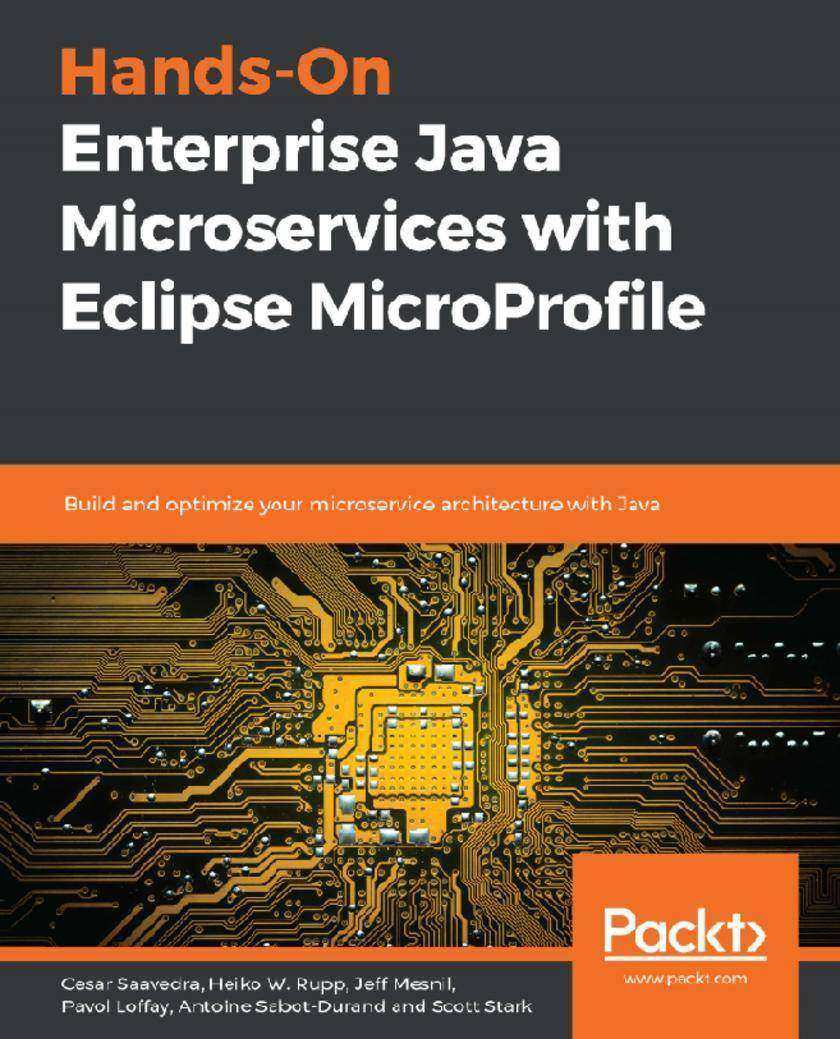
Hands-On Enterprise Java Microservices with Eclipse MicroProfile
¥63.21
An effective guide to designing, building, and deploying enterprise Java microservices with Eclipse MicroProfile Key Features * Create cloud-native microservices with ease using this detailed guide * Avoid vendor lock-in when implementing microservices using Eclipse MicroProfile * Discover why MicroProfile is a great specification for building microservices in multi-cloud environments Book Description Eclipse MicroProfile has gained momentum in the industry as a multi-vendor, interoperable, community-driven specification. It is a major disruptor that allows organizations with large investments in enterprise Java to move to microservices without spending a lot on retraining their workforce. This book is based on MicroProfile 2.2, however, it will guide you in running your applications in MicroProfile 3.0. You'll start by understanding why microservices are important in the digital economy and how MicroProfile addresses the need for enterprise Java microservices. You'll learn about the subprojects that make up a MicroProfile, its value proposition to organizations and developers, and its processes and governance. As you advance, the book takes you through the capabilities and code examples of MicroProfile’s subprojects - Config, Fault Tolerance, Health Check, JWT Propagation, Metrics, and OpenTracing. Finally, you’ll be guided in developing a conference application using Eclipse MicroProfile, and explore possible scenarios of what’s next in MicroProfile with Jakarta EE. By the end of this book, you'll have gained a clear understanding of Eclipse MicroProfile and its role in enterprise Java microservices. What you will learn * Understand why microservices are important in the digital economy * Analyze how MicroProfile addresses the need for enterprise Java microservices * Test and secure your applications with Eclipse MicroProfile * Get to grips with various MicroProfile capabilities such as OpenAPI and Typesafe REST Client * Explore reactive programming with MicroProfile Stream and Messaging candidate APIs * Discover and implement coding best practices using MicroProfile Who this book is for If you’re a Java developer who wants to create enterprise microservices, this book is for you. Familiarity with Java EE and the concept of microservices will help you get the most out of this book.
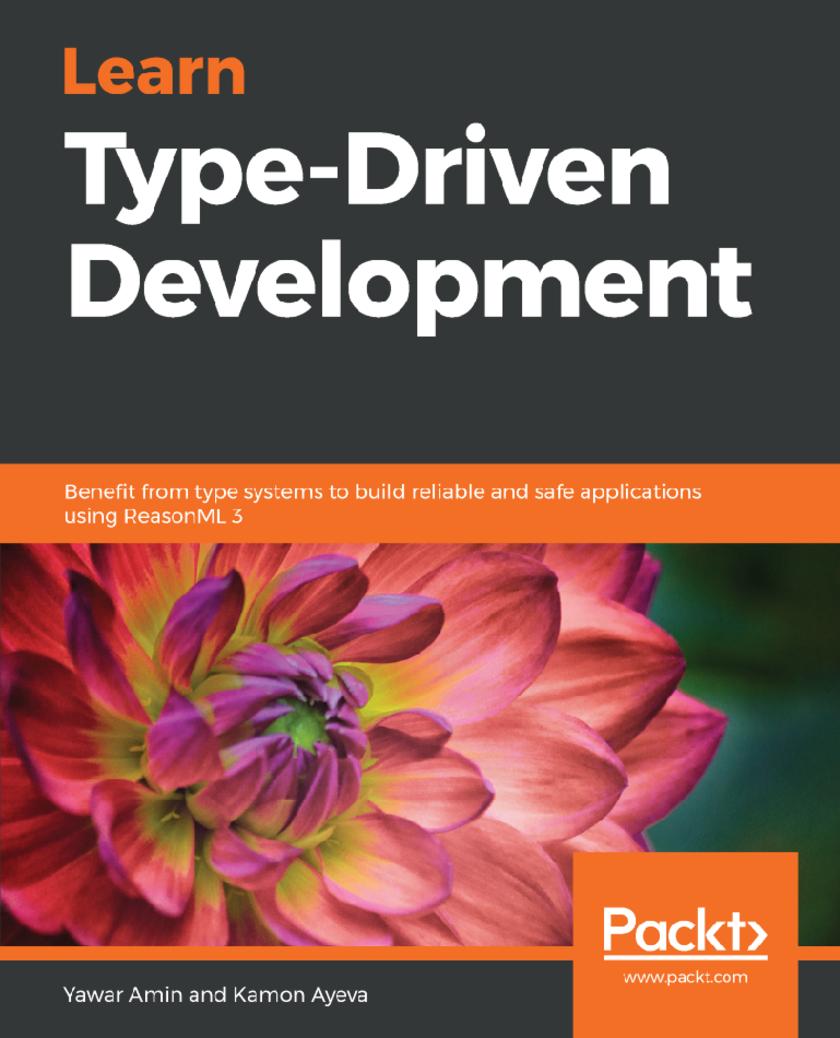
Learn Type-Driven Development
¥63.21
A fast paced guide for JavaScript developers for writing safe, fast, and reusable code by leveraging ResaonML's strong static type system Key Features *Reduce code errors with the power of type systems *Employ static typechecking and genericity to promote code reuse and consistency *Understand functional programming which is the foundation of type-driven development Book Description Type-driven development is an approach that uses a static type system to achieve results including safety and efficiency. Types are used to express relationships and other assumptions directly in the code, and these assumptions are enforced by the compiler before the code is run. Learn Type-Driven Development covers how to use these type systems to check the logical consistency of your code. This book begins with the basic idea behind type-driven development. You’ll learn about values (or terms) and how they contrast with types. As you progress through the chapters, you’ll cover how to combine types and values inside modules and build structured types out of simpler ones. You’ll then understand how to express choices or alternatives directly in the type system using variants, polymorphic variants, and generalized algebraic data types. You’ll also get to grips with sum types, build sophisticated data types from generics, and explore functions that express change in the types of values. In the concluding chapters, you’ll cover advanced techniques for code reuse, such as parametric polymorphism and subtyping. By end of this book, you will have learned how to iterate through a type-driven process of solving coding problems using static types, together with dynamic behavior, to obtain more safety and speed. What you will learn *Use static types to capture information, making programs safer and faster *Learn ReasonML from experienced type-driven developers *Enhance safety by simply using basic types *Understand the most important type-driven concepts with simple examples *Explore a design space using static typing and find the best way to express your system rules *Use static types and dynamic runtime in harmony to write even safer and faster code Who this book is for If you’re a programmer working with dynamically typed languages and are looking for ways to mitigate production runtime errors, Learn Type-Driven Development is for you. You’ll also find this book helpful if you’re a programmer working with statically typed languages looking for increased safety and improved performance.
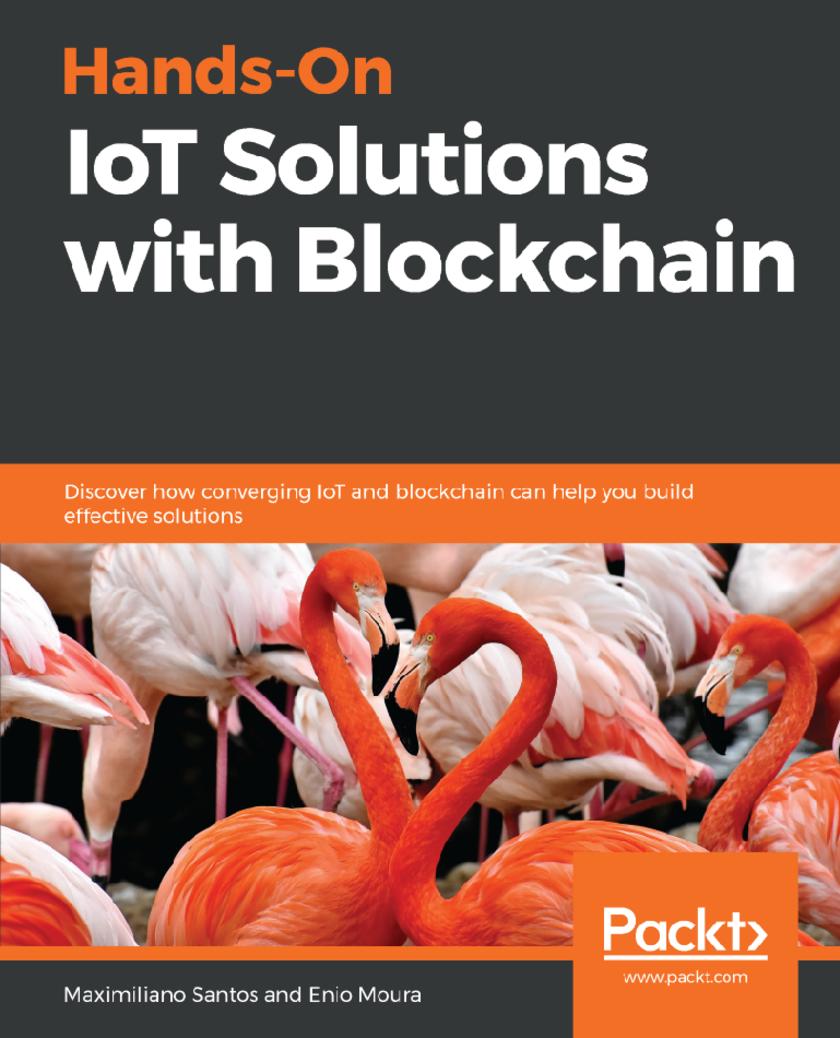
Hands-On IoT Solutions with Blockchain
¥63.21
Integrate an end-to-end logistic chain using IBM Blockchain and IoT platforms Key Features *Explore practical implementation of ledger technology in the IoT architecture *Study security best practices for your smart devices *Understand Blockchain implementation for end-to-end IoT solutions Book Description Blockchain has been the hot topic of late thanks to cryptocurrencies. To make matters more interesting, the financial market is looking for ways to reduce operational costs and generate new business models, and this is where blockchain solutions come into the picture. In addition to this, with Internet of Things (IoT) trending and Arduino, Raspberry Pi, and other devices flooding the market, you can now create cheap devices even at home. Hands-On IoT Solutions with Blockchain starts with an overview of IoT concepts in the current business scenario. It then helps you develop your own device on the IBM Watson IoT platform and create your fi rst IoT solution using Watson and Intel Edison.Once you are familiar with IoT, you will learn about Blockchain technology and its use cases. You will also work with the Hyperledger framework and develop your own Blockchain network. As you progress through the chapters, you'll work with problem statements and learn how to design your solution architecture so that you can create your own integrated Blockchain and IoT solution. The next set of chapters will explain how to implement end-to-end Blockchain solutions with IoT using the IBM Cloud platform. By the end of this book, you will have mastered the convergence of IoT and Blockchain technology and exploited the best practices and drivers to develop a bulletproof integrated solution. What you will learn *Understand the key roles of IoT in the current market *Study the different aspects of IBM Watson IoT platform *Create devices, gateways, and applications connected to the platform *Explore the fundamentals of Blockchain *Define good use cases for Blockchain *Discover the Hyperledger Fabric and Composer frameworks *Develop an IBM Watson IoT application using a Intel Edison *Integrate IoT with the Blockchain platform Who this book is for Hands-On IoT Solutions with Blockchain is for you if you are an Internet of Things (IoT) analyst, architect, engineer, or any stakeholder responsible for security mechanisms on an IoT infrastructure. This book is also for IT professionals who want to start developing solutions using Blockchain and IoT on the IBM Cloud platform. Basic understanding of IoT will assist you in understanding key concepts covered in the book.
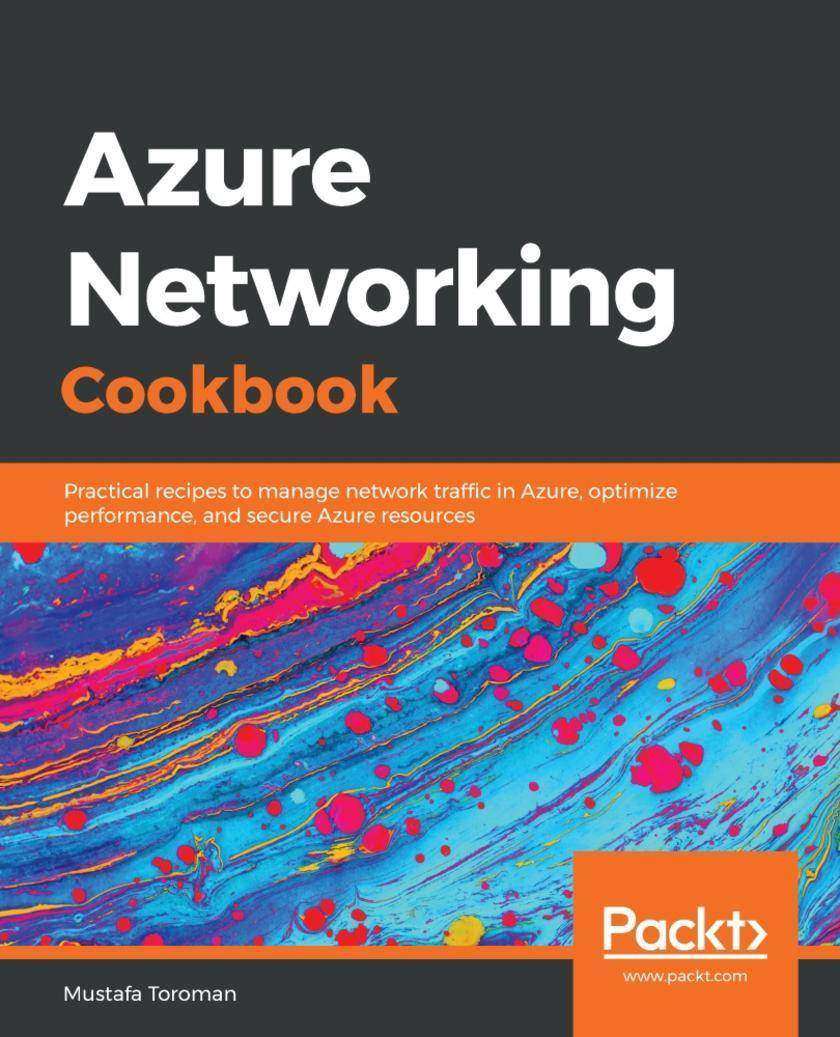
Azure Networking Cookbook
¥63.21
Learn to distribute network traffic, optimize application delivery, and defend network-level threats. Key Features * Quickly get up and running with Azure networking solutions * Level-up your cloud networking skills by planning, implementing, configuring, and securing your infrastructure network with Azure * Leverage Azure networking services to provide applications highly available and fault tolerant environment Book Description Microsoft provides organizations with an effective way of managing their network with Azure's networking services. No matter the size of your organization, Azure provides a way to highly reliable performance and secure connectivity with its networking services. The book starts with an introduction to the Azure networking like creating Azure virtual networks, designing address spaces and subnets. Then you will learn to create and manage network security groups, application security groups, and IP addresses in Azure. Gradually, we move on to various aspects like S2S, P2S, and Vnet2Vnet connections, DNS and routing, load balancers and traffic manager. This book will cover every aspect and function required to deliver practical recipes to help readers learn from basic cloud networking practices to planning, implementing, and securing their infrastructure network with Azure. Readers will not only be able to upscale their current environment but will also learn to monitor, diagnose, and ensure secure connectivity. After learning to deliver a robust environment readers will also gain meaningful insights from recipes on best practices. By the end of this book, readers will gain hands-on experience in providing cost-effective solutions that benefit organizations. What you will learn * Learn to create Azure networking services * Understand how to create and work on hybrid connections * Configure and manage Azure network services * Learn ways to design high availability network solutions in Azure * Discover how to monitor and troubleshoot Azure network resources * Learn different methods of connecting local networks to Azure virtual networks Who this book is for This book is targeted towards cloud architects, cloud solution providers, or any stakeholders dealing with networking on the Azure cloud. Some prior understanding of Microsoft Azure will be a plus point.
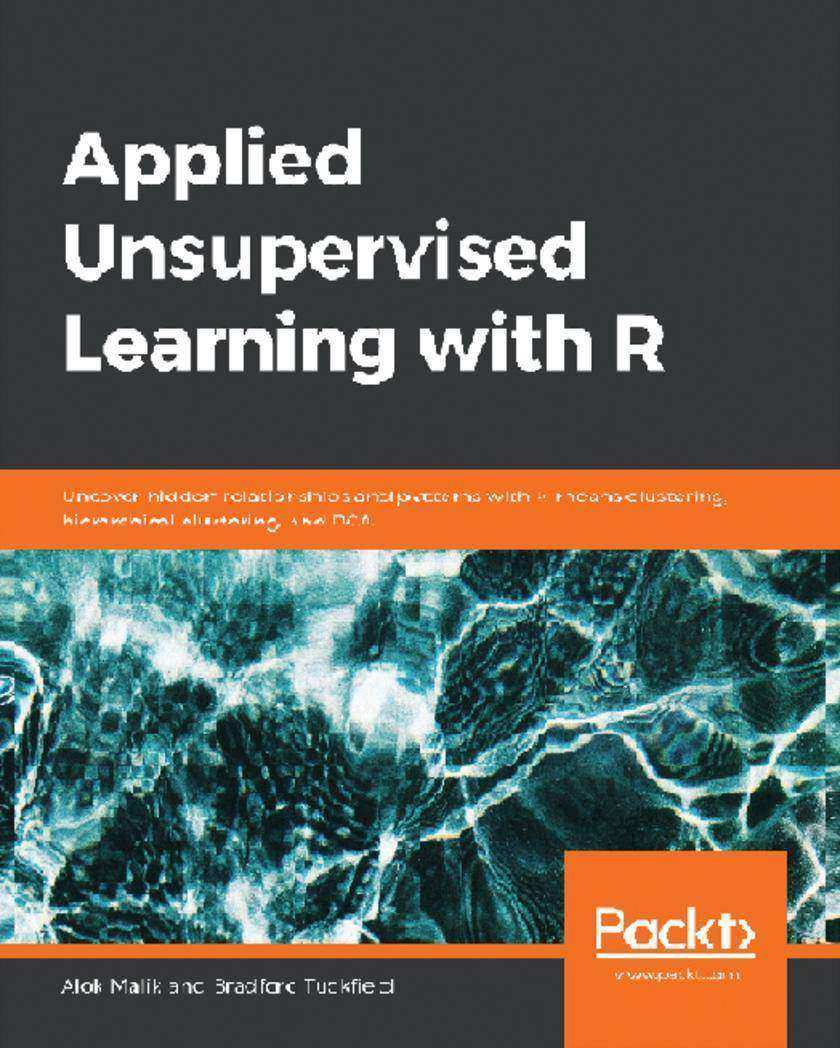
Applied Unsupervised Learning with R
¥63.21
Design clever algorithms that discover hidden patterns and draw responses from unstructured, unlabeled data. Key Features * Build state-of-the-art algorithms that can solve your business' problems * Learn how to find hidden patterns in your data * Revise key concepts with hands-on exercises using real-world datasets Book Description Starting with the basics, Applied Unsupervised Learning with R explains clustering methods, distribution analysis, data encoders, and features of R that enable you to understand your data better and get answers to your most pressing business questions. This book begins with the most important and commonly used method for unsupervised learning - clustering - and explains the three main clustering algorithms - k-means, divisive, and agglomerative. Following this, you'll study market basket analysis, kernel density estimation, principal component analysis, and anomaly detection. You'll be introduced to these methods using code written in R, with further instructions on how to work with, edit, and improve R code. To help you gain a practical understanding, the book also features useful tips on applying these methods to real business problems, including market segmentation and fraud detection. By working through interesting activities, you'll explore data encoders and latent variable models. By the end of this book, you will have a better understanding of different anomaly detection methods, such as outlier detection, Mahalanobis distances, and contextual and collective anomaly detection. What you will learn * Implement clustering methods such as k-means, agglomerative, and divisive * Write code in R to analyze market segmentation and consumer behavior * Estimate distribution and probabilities of different outcomes * Implement dimension reduction using principal component analysis * Apply anomaly detection methods to identify fraud * Design algorithms with R and learn how to edit or improve code Who this book is for Applied Unsupervised Learning with R is designed for business professionals who want to learn about methods to understand their data better, and developers who have an interest in unsupervised learning. Although the book is for beginners, it will be beneficial to have some basic, beginner-level familiarity with R. This includes an understanding of how to open the R console, how to read data, and how to create a loop. To easily understand the concepts of this book, you should also know basic mathematical concepts, including exponents, square roots, means, and medians.
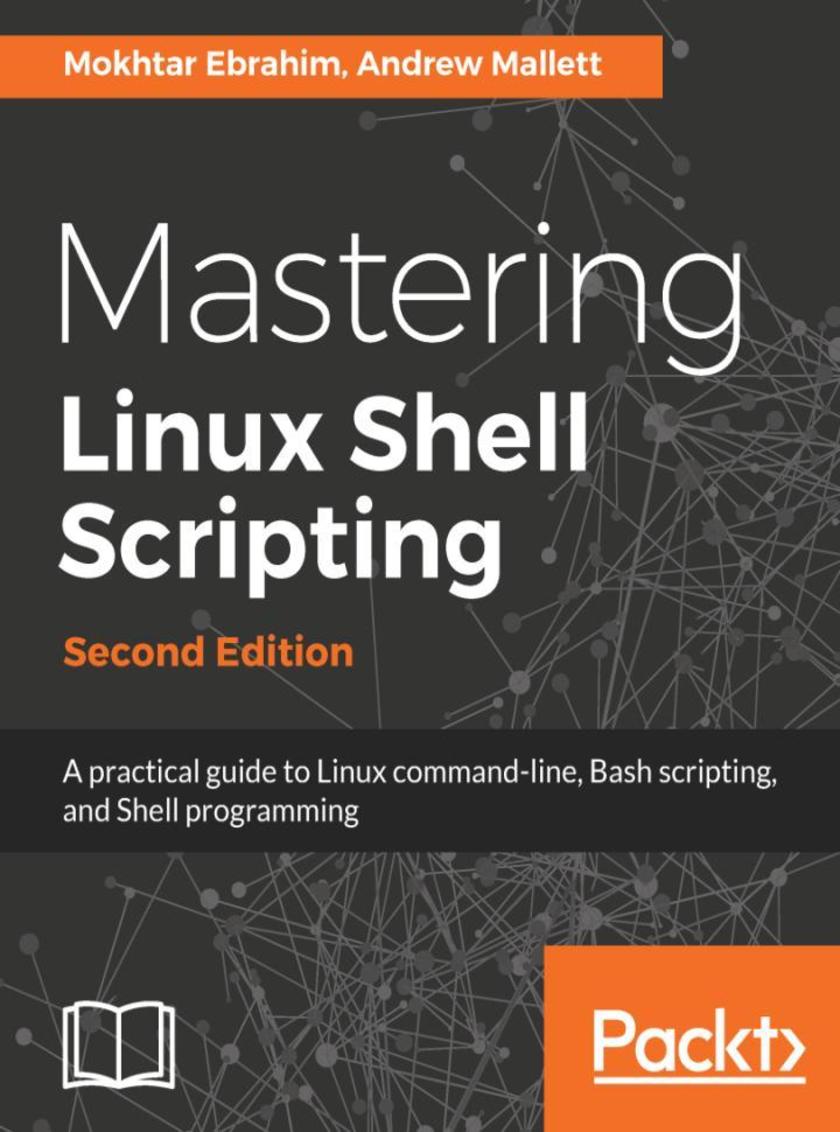
Mastering Linux Shell Scripting
¥63.21
Master the complexities of Bash shell scripting and unlock the power of shell for your enterprise About This Book ? Identify high-level steps such as verifying user input ? Using the command line and conditional statements in creating/executing simple shell scripts ? Create and edit dynamic shell scripts to manage complex and repetitive tasks ? Leverage the command-line to bypass GUI and automate common tasks Who This Book Is For If you are a Linux administrator or a system administrator and are interested in automating tasks in your daily lives, saving time and effort, this book is for you. Basic shell scripting and command-line experience will be required. Familiarity with the tasks you need to automate will be helpful. What You Will Learn ? Make, execute, and debug your first Bash script ? Create interactive scripts that prompt for user input ? Foster menu structures for operators with little command-line experience ? Develop scripts that dynamically edit web configuration files to produce a new virtual host ? Write scripts that use AWK to search and reports on log files ? Draft effective scripts using functions as building blocks, reducing maintenance and build time ? Make informed choices by comparing different script languages such as Python with BASH In Detail In this book, you’ll discover everything you need to know to master shell scripting and make informed choices about the elements you employ. Grab your favorite editor and start writing your best Bash scripts step by step. Get to grips with the fundamentals of creating and running a script in normal mode, and in debug mode. Learn about various conditional statements' code snippets, and realize the power of repetition and loops in your shell script. You will also learn to write complex shell scripts. This book will also deep dive into file system administration, directories, and system administration like networking, process management, user authentications, and package installation and regular expressions. Towards the end of the book, you will learn how to use Python as a BASH Scripting alternative. By the end of this book, you will know shell scripts at the snap of your fingers and will be able to automate and communicate with your system with keyboard expressions. Style and approach The book will capture your attention and keep you engaged with the simplicity and clarity of each explanation. Every step is accompanied by screenshots so you can cross-check the results before moving on.
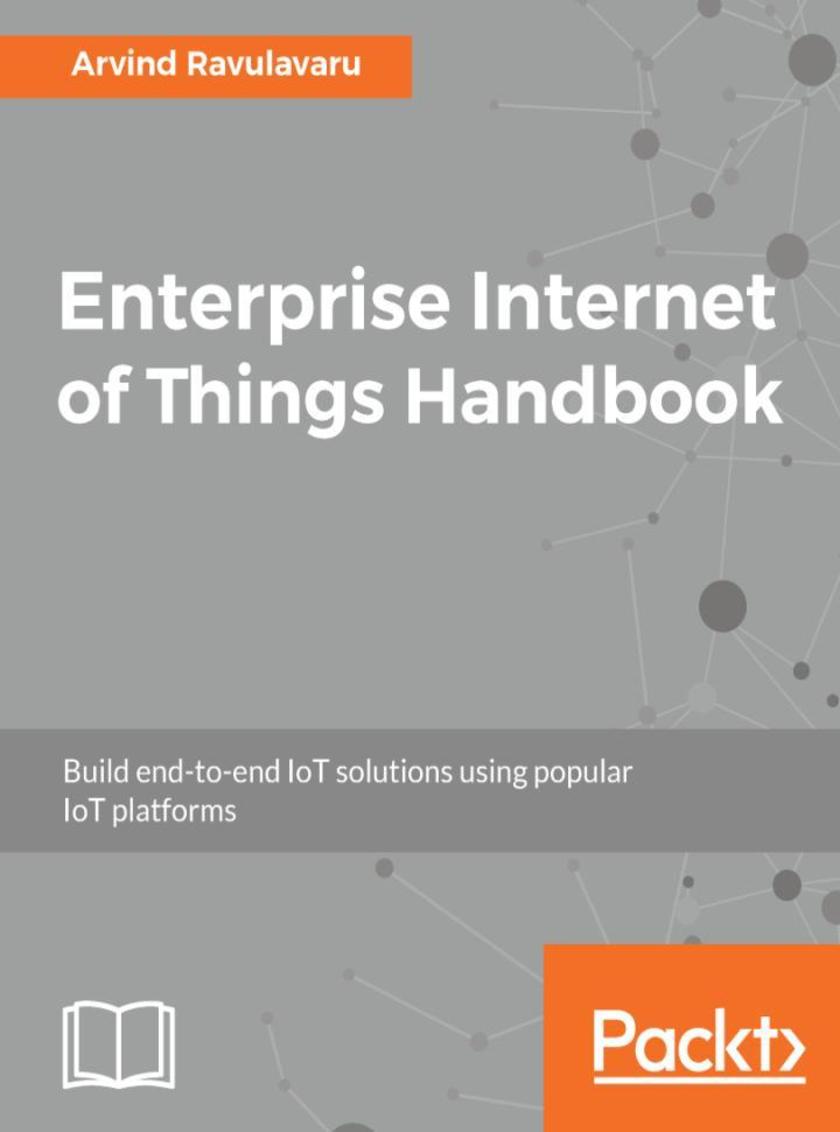
Enterprise Internet of Things Handbook
¥63.21
Get familiar with the building blocks of IoT solutions using off–the-shelf IoT platforms. About This Book ? Work with various trending IoT platforms such as AWS IoT, Azure IoT, Google IoT, IBM Watson IoT, and Kaa IoT ? Gain hands-on knowledge working with Cloud-based IoT platforms, IoT Analytics, and so on. ? A practical guide that will help you build IoT strategies for your organization Who This Book Is For This book is targeted at IoT architects and engineers, or any stakeholders working with IoT solutions in an organization. This book will also help decision makers and professionals from small- and medium-sized enterprises build an IoT strategy for their venture. What You Will Learn ? Connect a Temperature and Humidity sensor and see how these two can be managed from various platforms ? Explore the core components of AWS IoT such as AWS Kinesis and AWS IoTRules Engine ? Build a simple analysis dashboard using Azure IoT and Power BI ? Understand the fundamentals of Google IoT and use Google core APIs to build your own dashboard ? Get started and work with the IBM Watson IoT platform ? Integrate Cassandra and Zeppelin with Kaa IoT dashboard ? Review some Machine Learning and AI and get to know more about their implementation in the IoT domain. In Detail There is a lot of work that is being done in the IoT domain and according to Forbes the global IoT market will grow from $157B in 2016 to $457B by 2020. This is an amazing market both in terms technology advancement as well as money. In this book, we will be covering five popular IoT platforms, namely, AWS IoT, Microsoft Azure IoT, Google IoT Core, IBM Watson IoT, and Kaa IoT middleware. You are going to build solutions that will use a Raspberry Pi 3, a DHT11 Temperature and humidity sensor, and a dashboard to visualize the sensor data in real-time. Furthermore, you will also explore various components of each of the platforms that are needed to achieve the desired solution. Besides building solutions, you will look at how Machine Learning and IoT go hand in hand and later design a simple predictive web service based on this concept. By the end of this book, you will be in a position to implement an IoT strategy best-fit for your organization Style and approach An informative guide that will help you design and implement an IoT Strategy best-fit for your organization
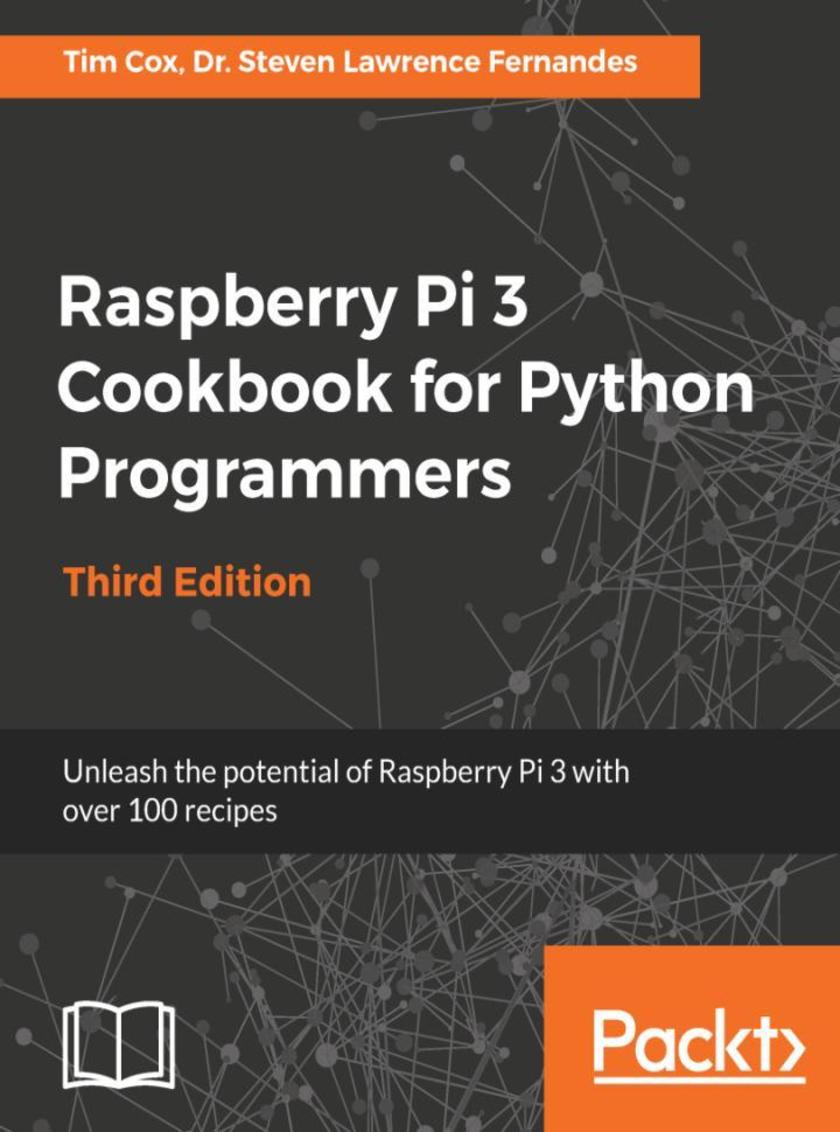
Raspberry Pi 3 Cookbook for Python Programmers
¥63.21
A recipe-based guide to programming your Raspberry Pi 3 using Python About This Book : ? Leverage the power of Raspberry Pi 3 using Python programming ? Create 3D games, build neural network modules, and interface with your own circuits ? Packed with clear, step-by-step recipes to walk you through the capabilities of Raspberry Pi Who This Book Is For : This book is for anyone who wants to master the skills of Python programming using Raspberry Pi 3. Prior knowledge of Python will be an added advantage. What You Will Learn : ? Learn to set up and run Raspberry Pi 3 ? Build text classifiers and perform automation using Python ? Predict sentiments in words and create games and graphics ? Detect edges and contours in images ? Build human face detection and recognition system ? Use Python to drive hardware ? Sense and display real-world data ? Build a neural network module for optical character recognition ? Build movie recommendations system In Detail : Raspberry Pi 3 Cookbook for Python Programmers – Third Edition begins by guiding you through setting up Raspberry Pi 3, performing tasks using Python 3.6, and introducing the first steps to interface with electronics. As you work through each chapter, you will build your skills and apply them as you progress. You will learn how to build text classifiers, predict sentiments in words, develop applications using the popular Tkinter library, and create games by controlling graphics on your screen. You will harness the power of a built in graphics processor using Pi3D to generate your own high-quality 3D graphics and environments. You will understand how to connect Raspberry Pi’s hardware pins directly to control electronics, from switching on LEDs and responding to push buttons to driving motors and servos. Get to grips with monitoring sensors to gather real-life data, using it to control other devices, and viewing the results over the internet. You will apply what you have learned by creating your own Pi-Rover or Pi-Hexipod robots. You will also learn about sentiment analysis, face recognition techniques, and building neural network modules for optical character recognition. Finally, you will learn to build movie recommendations system on Raspberry Pi 3. Style and approach : Written in a cookbook style, this book contains a series of recipes on various topics. It is an easy-to-follow step-by-step guide with examples of feature integration suitable for any search application.
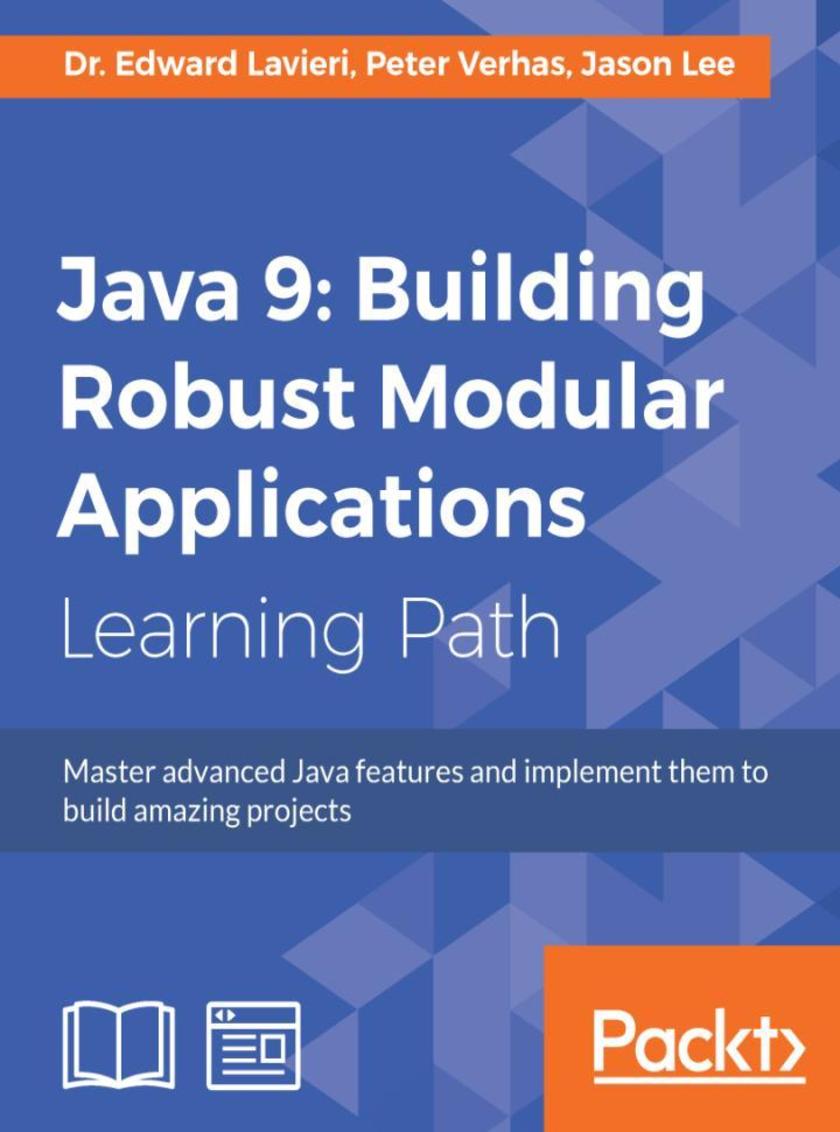
Java 9: Building Robust Modular Applications
¥63.21
Mastering advanced features of Java and implement them to build amazing projects About This Book ? Take advantage of Java's new modularity features to write real-world applications that solve a variety of problems ? Explore the major concepts introduced with Java 9, including modular programming, HTTP 2.0, API changes, and more ? Get to grips with tools, techniques and best practices to enhance application development Who This Book Is For This learning path is for Java developers who are looking to move a level up and learn how to build robust applications in the latest version of Java. What You Will Learn ? Package Java applications as modules using the Java Platform Module System ? Implement process management in Java using the all-new process handling API ? Integrate your applications with third-party services in the cloud ? Interact with mail servers, using JavaMail to build an application that filters spam messages ? Use JavaFX to build rich GUI-based applications, which are an essential element of application development ? Leverage the possibilities provided by the newly introduced Java shell ? Test your application's effectiveness with the JVM harness ? See how Java 9 provides support for the HTTP 2.0 standard In Detail Java 9 and its new features add to the richness of the language; Java is one of the languages most used by developers to build robust software applications. Java 9 comes with a special emphasis on modularity with its integration with Jigsaw. This course is your one-stop guide to mastering the language. You'll be provided with an overview and explanation of the new features introduced in Java 9 and the importance of the new APIs and enhancements. Some new features of Java 9 are ground-breaking; if you are an experienced programmer, you will be able to make your enterprise applications leaner by learning these new features. You'll be provided with practical guidance in applying your newly acquired knowledge of Java 9 and further information on future developments of the Java platform. This course will improve your productivity, making your applications faster. Next, you'll go on to implement everything you've learned by building 10 cool projects. You will learn to build an email filter that separates spam messages from all your inboxes, a social media aggregator app that will help you efficiently track various feeds, and a microservice for a client/server note application, to name just a few. By the end of this course, you will be well acquainted with Java 9 features and able to build your own applications and projects. This Learning Path contains the best content from the following two recently published Packt products: ? Mastering Java 9 ? Java 9 Programming Blueprints Style and approach This practical guide is filled with real-world examples. Its projects will help you get acquainted with concepts in depth.




 购物车
购物车 个人中心
个人中心



